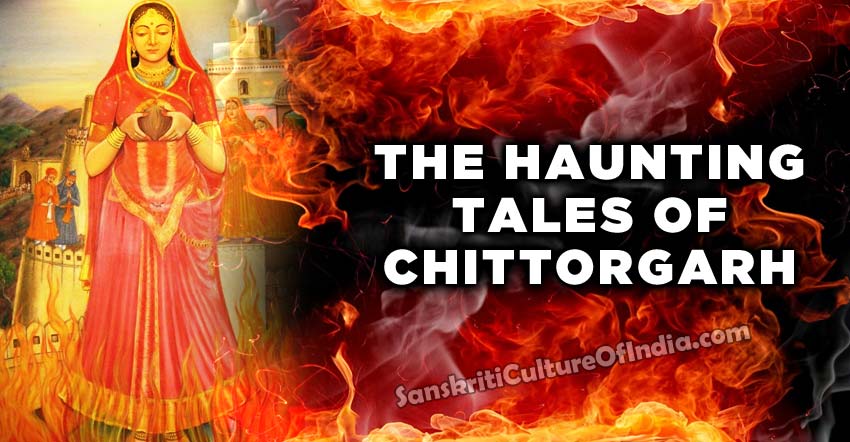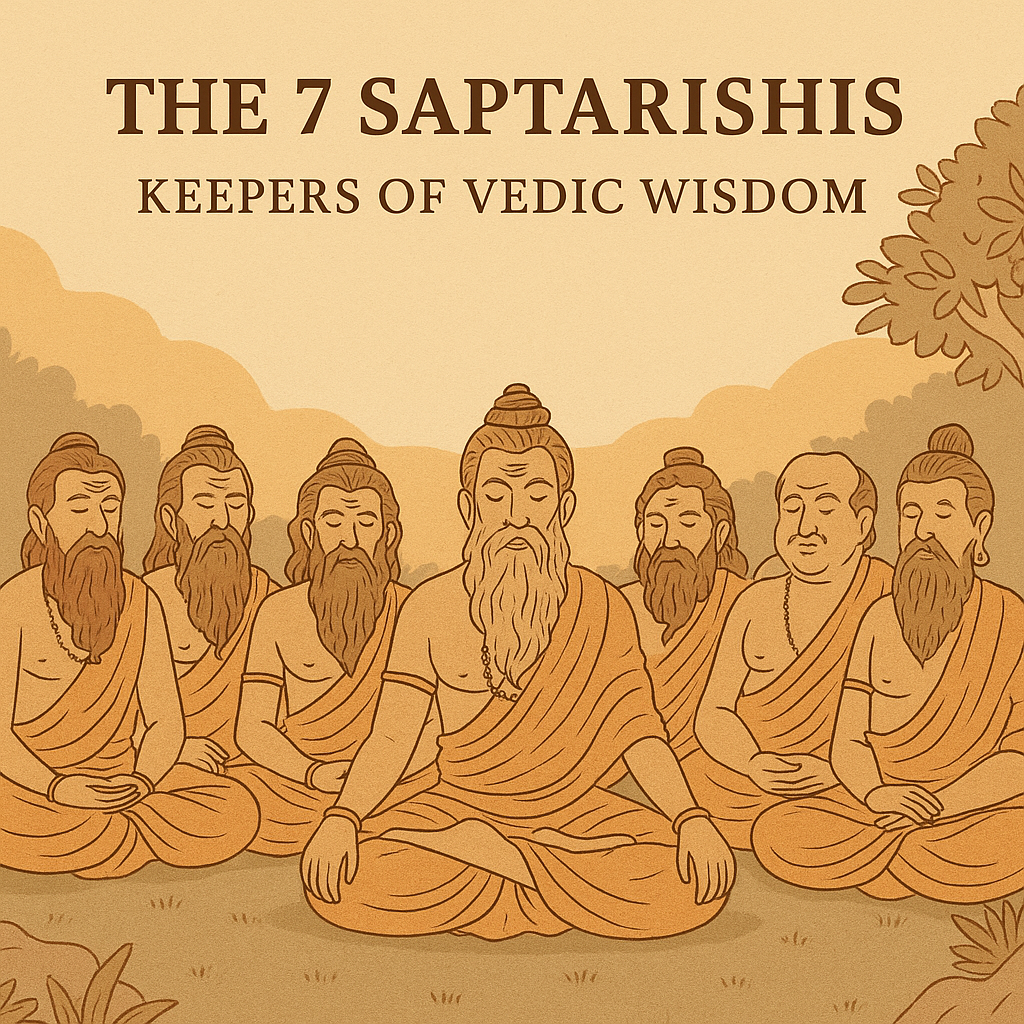Chittor is a city and a municipality in Rajasthan state of western India. It lies on the Berach River, a tributary of the Banas, and is the administrative headquarters of Chittorgarh District and a former capital of the Sisodia clans of Rajputs of Mewar. The city of Chittorgarh is located on the banks of river Gambhiri and Berach. The district was bifurcated and a new district namely Pratap Garh was created with certain portion taken from Udaipur district in the newly created district of Pratap Garh.
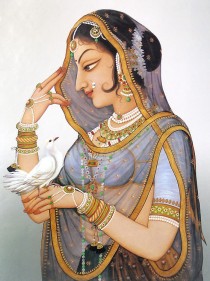
Fiercely independent, the fort of Chittor was under siege three times and each time they fought bravely; three times Jauhar was committed by the ladies and children, first led by Rani Padmini, and later by Rani Karnavati. The famous warriors Gora and Badal, in the war against Allaudin Khalji (1303 AD), have become legendary. The sacrifice of Jaimal and Phata in the war against the Mughals (1568 AD) was so great that the Mughal Emperor Akbar installed their statues in the fort of Agra. It has also been land of worship for Meera. Chittorgarh is home to the Chittorgarh Fort, the largest fort in Asia.
Historically, it is considered that Chittor was built by the Maurya dynasty in the 7th century AD. It was then named Chitrakut after Chitrangada Mori, a Rajput chieftain as inscribed on ancient Mewari coins. The fort is surrounded by a circular wall which has seven huge gates before one can enter inside the main fort area. Some accounts say that the Mori dynasty was in possession of the fort when Bappa Rawal the founder of the kingdom of Mewar seized Chittor garh (Chittor fort) and made it his capital in 734 AD. While some other accounts say Bappa Rawal received it as a part of the dowry after marriage with the last Solanki princess. After that date his descendants ruled Mewar, which stretched from Gujarat to Ajmer, until the 16th century. Chittor was one of the most contested seats of power in India with probably some of the most glorious battles being fought over its possession. It is famous in the annals of the Mewar Dynasty as its first capital (prior to this, the Guhilots, forerunners of the Mewar Dynasty, ruled from Idar, Bhomat, and Nagda), and renowned in India’s long struggle for freedom. By tradition, it remained the Mewar capital for 834 years. With only brief interruptions, the fort has always remained in possession of the Sisodias of the Guhilot (or Gehlot/Guhila) clan of Rajputs, who descended from Bappa Rawal.
The first attack was by Alauddin Khilji in 1303 AD, who was enamored by the beauty of Padmini of which he had only heard. Rani Padmini preferred death to abduction and dishonor and committed jauhar (an act of self immolation by leaping into a large fire) along with all the other ladies of the fort. All the men left the fort in saffron robes to fight the enemy unto death. Chittorgarh was captured in 1303 AD by Alauddin Khilji, Sultan of Delhi who led a huge army. Elderly people then had the responsibility to raise the children. It was recaptured in 1326 by the young Hammir Singh, a scion of the same Gehlot clan. The dynasty (and clan) fathered by him came to be known by the name Sisodia after the village where he was born.
By the 16th century, Mewar had become the leading Rajput state. Rana Sanga of Mewar led the combined Rajput forces against the Mughal emperor Babur in 1527, but was defeated at the Battle of Khanua. Later in 1535 Bahadur Shah, the Sultan of Gujarat besieged the fort causing immense carnage. It is said that again just like in the case of Jauhar led by Padmini in 1303, all 32,000 men then living in the fort donned the saffron robes of martyrdom and rode out to face certain death in the war, and their women folk committed Jauhar led by Rani Karnawati. The ultimate sacrifice for freedom, Jauhar was again performed for the third time after the Mughal Emperor Akbar captured Chittorgarh in 1568. The capital was moved west to Udaipur, in the foothills of the Aravalli Range, where Rana Udai Singh II (the young heir apparent) had established a residence in 1559. Udaipur remained the capital of Mewar until it acceded unto the union of India in 1947, and Chittorgarh gradually lost its political importance.
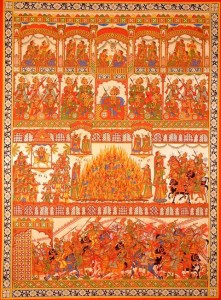
Bhumihars along with others, in some places, were also involved in anti-Muslim communal violence during the Partition of India and during the 1893 Anti-Muslim riots. Chittorgarh is also famous for its association with two very widely known historical figures of India. The first is, Meera Bai the most famous female Hindu spiritual poetess whose compositions are still popular throughout North India. Her poems follow the Bhakti tradition and she is considered to be most passionate worshiper of lord Krishna. Folklore says that her love for Krishna was epitomized by her final disappearance in the temple of Krishna in Dwarka. She is believed to have entered the sanctum of the temple in a state of singing ecstasy after which the sanctum doors are believed to have closed on their own and when later opened, the sari of Mirabai was seen enwrapped around the idol of Lord Krishna, symbolizing the culmination of her union with her Lord.
The great Maharana Pratap, son of Rana Udai Singh II who is regarded as a personification of the values Rajputs cherish and die for. He took an oath to spend his life living in the jungles and fighting until he could realize his dream of reconquering Chittorgarh from Akbar (and thus reclaiming the glory of Mewar). It was the dream greatly cherished by Maharana Pratap, and he spent all his life to achieve this goal. He underwent hardships and a life of eating breads made of grass while fighting his lifelong battle. Maharana Pratap is the greatest hero in the eyes of the Raputs of Mewar. In the absolute dark era of Rajput history, Maharana Pratap alone stood firmly for his honour and dignity, never compromising his honour for safety. With the reputation of a brave man with great character even among his enemies, he died free in 1597.
Chittorgarh remains replete with historic associations and holds a very special place in the hearts of Rajputs, as it was a bastion of the clan at a time when every other stronghold had succumbed to invasion. It is often called as the “Bhakti aur Shakti ki nagari” (land of devotion and strength). The fort and the city of Chittorgarh also hosts the biggest Rajput festival “Jauhar Mela”. It takes place annually on the anniversary of one of the jauhars, not the one by Padmini which is most famous. This festival is to commemorate the bravery of Rajput ancestors and all three Jauhars which happened at Chittorgarh. A huge number of Rajputs which include the descendants of most of the princely families do a procession to celebrate the Jauhar. The fort at Chittorgarh also contains the ancient and beautiful temple to Goddess Kali called the Kalika Mata Temple.
First Jauhar of Chittor
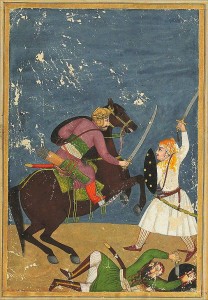
In 1303 AD, Ala-ud-din Khilji, the Muslim Sultan of Delhi besieged Chittor fort, which was under the control of Rana Rawal Ratan Singh. The Rana allowed Khilji one glimpse of his wife, Rani Padmini, in a mirror, before he was at the gates and held hostage for Padmini. Padmini sent misleading information that she would join Ala-ud-din, but she was to come with 700 women as befitted her status. The Rajputs were thus able to infiltrate about 2000 men into Ala-ud-din’s camp. Each Palaqi Palanquin) contained two Rajput soldiers and four men to lift it. Gora and Badal were leading this team. Ala-ud-din allowed Padmini one final meeting with her husband, which allowed the Rajputs to whisk Ratan Singh out from under the Khilji king’s nose. Beaten, Ala-ud-din returned to Delhi, only to come back better equipped early the next year. The Rajput defense failed as a result of this second attack and, to a man, perished on the battlefield while their womenfolk, led by Maharani Padmini, performed Jauhar.
The siege of Chittor, its brave defense by the Guhilas, the saga of Rani Padmini and the Jauhar she led are legendary.
Second Jauhar of Chittor
Rana Sanga died in 1528 AD after the Battle of Khanua. Shortly afterwards, Mewar and Chittor came under the regency of his widow, Rani Karnavati. The kingdom was menaced by Bahadur Shah of Gujarat, who besieged Chittorgarh. Without relief from other forces and facing defeat, the Rani committed Jauhar with other women on March 8, 1535 A.D. while the Rajput army sallied out to meet the besieging Muslim army and committed saka.
According to one romantic legend of dubious veracity, Karnavati importuned the assistance of Humayun the son of Babur, her late husband’s foe, by sending him a Rakhi and a request for his help as a brother. The help arrived too late. This is the occasion for the second of the three Jauhars performed at Chittor.
Third Jauhar of Chittor
Emperor Akbar besieged the fort of Chittor in September 1567. Changing the strategy, Rana Udai Singh II, his sons and the royal women, using secret routes, escaped soon after the siege began. The fort was left under Jaimal Rathore and Patta Sisodiya’s command. One morning Akbar found Jaimal inspecting repairs to the fort which had been damaged by explosives, and killed him. That same day the Rajputs realized that defeat was certain. The Rajput women committed Jauhar in the night of February 22, 1568 AD, and the next morning, the Rajput men committed saka. Abul Faz’ has given a true account of the event as seen by Akbar in his biography in 1568 AD.
SAKA & JAUHAR TRADITION
Jauhar: When the outcome of a battle was against the Rajputs, jauhar would be committed by Rajput women and children in the night and next morning men would commit saka. Brahmin priests would chant Vedic mantras and Rajput women wearing their marriage dresses, along with their young children, embrace sandalwood flames.
Saka: The next morning after taking a bath, the men would wear kesariya (saffron) and apply the ash from the maha samadhi of their wives and children on their foreheads and put a tulsi leaf in their mouth. Then the Palace Gates would be opened and men would ride out for complete annihilation of the enemy or themselves. Rajput men and women could not be captured alive.
When Hindus fought against other Hindus there were never any jauhars or saka because the defeated were treated with dignity. However, history records very few instances wherein a Rajput king sued for peace after a battle reversal and the Mughals initially agreed to the peace terms, only for the Rajputs, and their women and children, to be slaughtered upon surrender and once the pols (or gates) of their mighty fortresses were opened.
One example of this is war between Puran Mal of Raisina (now in Madhya Pradesh) and brutal Afghan Sher Shah Suri. The opposite is true for wars between Marathas and Rajputs, where even after battle reversals, no jauhars took place in Rajasthan.
REASON FOR JAUHAR:
If the Mughals got hold of the dead bodies of the kafir women after victory in the battle, they would then rape even the dead bodies of these women. It was to prevent such ‘desecration’ of their own bodies after death by poison that the Rajput women used to jump into the pits of fire. Thus, when the Mughals finally came to the city, they did not find a single woman’s body, dead or alive.
Hence, the reason as to why this system (which is said to be inhuman today) came into existence, can be understood only in the light of the brutality of Afghan Pathan Plunderers…

